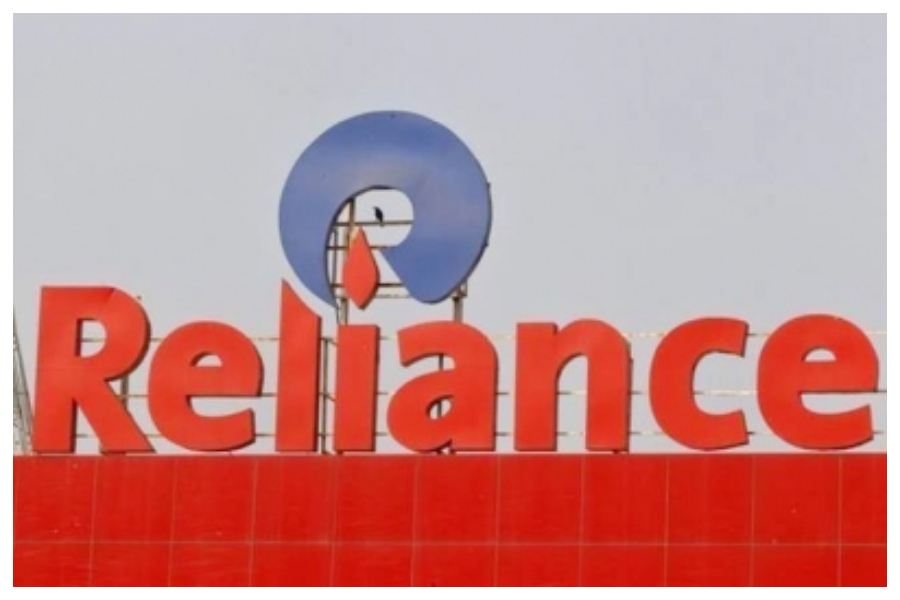Business
Reliance Infra to receive Rs 595 Cr. From DVC by July end

Reliance Infrastructure Limited (Reliance Infra) is set to receive a sum of Rs 595 crore from Damodar Valley Corporation (DVC) by July 31.
Pursuant to an order passed by the Supreme Court on May 31, Chairman, DVC has furnished an undertaking on June 6, 2022 stating that DVC will comply with the direction to deposit a sum of Rs 595 crore in cash and Rs 303 crore by way of Bank Guarantee within July 31.
The directions for furnishing an undertaking have been issued to safeguard the interest of Reliance Infra whilst granting extension of time to DVC.
The genesis of this matter is an arbitration dispute between Reliance Infra and DVC, wherein a 3-0 Award was passed in favour of Reliance Infra and an aggregate sum of Rs 1,250 crore approximately comprising cash component of approx Rs 898 crore and release of 6 Bank Guarantees of approximately Rs 353 crore was directed to be paid by DVC.
The Award carries an interest obligation of 12 per cent per annum upon DVC on the sum awarded i.e., Rs 898 crore. The aggregate interest burden upon the tax payers, as accumulated by DVC, as on May 31 is approximately Rs 260 crore.
In terms of the order dated May 31, DVC is now bound by its Chairman’s undertaking to deposit the Award amount of Rs 898 crore, in the mode prescribed, by July 31 albeit after elapse of nearly 2.5 years.
Reliance Infra had also preferred a contempt petition against officials of DVC in view of DVC’s failure to comply with the Supreme Court’s order dated April 25 requiring DVC to furnish the deposit of Rs 595 crore in cash and Rs 303 crore by way of Bank Guarantees within 4 weeks.
The Supreme Court by its order declined to interfere with the Calcutta High Court order dated March 25 which directed DVC to deposit a sum of Rs 898 crore i.e. Rs 595 crore by way of cash and Rs 303 crore by way of Bank Guarantee.
The Calcutta High Court also permitted Reliance Infra to withdraw the sum of Rs 595 crore by furnishing Bank Guarantees of equivalent amount with the Registrar, Calcutta High Court.
In an earlier round of litigation between the parties, pursuant to a direction by the Supreme Court, the Bank Guarantees of Reliance Infra have been released by DVC in December 2021.
The non-release of the Bank Guarantees by DVC till December 2021 entailed an additional interest burden of approximately Rs 107 crore on the tax payers.
Business
Indian stock markets end higher after two days of losses

Mumbai, Nov 3: Indian equity markets ended a volatile session on a positive note on Monday, snapping a two-day losing streak.
Gains in real estate and state-owned bank stocks helped lift the indices despite early weakness.
After opening lower, the Sensex recovered to touch an intra-day high of 84,127 before closing 39.78 points, or 0.05 per cent, higher at 83,978.49.
The Nifty also gained 41.25 points, or 0.16 per cent, to end at 25,763.35.
“The Nifty oscillated between 25,700 and 25,800 through the day, showing resilience after briefly dipping below the October 24 low of 25,718,” analysts said.
“The zone between 25,660–25,700 once again acted as a strong demand pocket, helping the index recover intraday losses and maintain a constructive tone ahead of key global data releases,” they added.
Among the Sensex stocks, Maruti Suzuki fell over 3 per cent and was among the top losers along with Titan Company, BEL, TCS, ITC, NTPC, Bajaj Finserv, Tata Steel and tech Mahindra.
On the other hand, Mahindra & Mahindra, State Bank of India, Tata Motors Passenger Vehicles, and HCL Tech were the major gainers.
In the broader markets, the Nifty MidCap index rose 0.77 per cent, while the Nifty SmallCap index advanced 0.72 per cent, showing strength beyond the frontline stocks.
Among sectoral indices, PSU bank shares led the rally, with the Nifty PSU Bank index climbing 1.92 per cent.
Bank of Baroda surged 5 per cent, while Canara Bank, Bank of Maharashtra, Bank of India, and Indian Bank also gained.
The Nifty Metal and Realty indices also added up to 2 per cent each.
Meanwhile, the FMCG, Private Bank, and IT indices slipped up to 0.4 per cent, capping the market’s overall gains.
Analysts said that despite mixed global cues and cautious investor sentiment, buying in select sectors helped the markets end the day in the green.
“The domestic market ended on a marginal positive note as profit booking was visible at the higher levels due to the absence of fresh domestic triggers,” market watchers said.
“While the broader market outperformed since the quarterly earnings are steering investors’ preference to take a short- to medium-term view,” they mentioned.
Business
India’s manufacturing growth picks up in Oct due to robust domestic demand: PMI data

New Delhi, Nov 3: India’s manufacturing sector growth surged in the month of October, fuelled by strong domestic demand, GST 2.0 reforms, productivity gains and increased technology investments, a report said on Monday.
The HSBC India Manufacturing Purchasing Managers’ Index (PMI) rose to 59.2 in October from 57.7 in September, according to data compiled by US-based financial intelligence provider S&P Global.
The increase stemmed from quicker growth in new orders and factory output at the beginning of the third financial quarter, driven by boost in advertising and recent GST reforms, the report said.
The expansion rate matched levels seen in August, which was one of the strongest in the last five years, it indicated.
A reading above 50 indicates economic expansion, while one below 50 shows contraction in the manufacturing, services, or construction sectors. A reading of exactly 50 signifies flat activity.
The manufacturing PMI acceleration comes from robust end-demand fuelled expansions in output, new orders, and job creation, said Pranjul Bhandari, chief India economist at HSBC.
Meanwhile, input prices moderated in October while average selling prices increased as some manufacturers passed on additional cost burdens to end-consumers, Bhandari added.
Despite input cost inflation easing to an eight-month low, output charge inflation remained at its highest level in 12 years for the second consecutive month.
Companies reported passing on higher freight and labour costs to customers, while strong demand allowed them to maintain elevated prices.
Domestic sales growth outpaced export orders, which grew more slowly even with some improvement in overseas demand. Employment creation continued for the twentieth straight month in October, with hiring remaining moderate and largely consistent with September’s levels, it noted.
Manufacturers remain optimistic about future business conditions, crediting their optimism to GST reforms, capacity expansion, and stronger marketing efforts, the report noted.
Business
Commercial LPG cylinder prices reduced across metros from November 1

New Delhi, Nov 1: State-run oil marketing companies have reduced commercial LPG cylinder prices across metros, offering a slight relief to businesses, starting from Saturday.
The move will provide marginal relief to thousands of small and medium-sized businesses.
According to the latest revision announced by state-run oil marketing companies (OMCs), the 19-kg commercial LPG cylinder will now cost Rs 1,590.50 in Delhi, reflecting a Rs 5 cut from the previous rate of Rs 1,595.50.
With the highest drop of Rs 6.50 per cylinder among the metros, the charge in Kolkata will now be Rs 1,694 per cylinder. Chennai will now charge Rs 1,750 (down Rs 4.50), while Mumbai now charges Rs 1,542 (down Rs 5).
For businesses that depend significantly on LPG for their everyday operations, like restaurants, hotels, and catering services, the most recent revision provides a small reprieve following a hike of Rs 15.50 that was put into effect late in September.
However, domestic LPG prices have not changed and are the same in every city.
Earlier in September, OMCs had reduced the price of commercial LPG gas cylinders by Rs 51.50. Following the revision, a 19-kg commercial LPG cylinder in Delhi was available at Rs 1,580.
Earlier, OMCs had reduced the price of a 19 kg commercial LPG gas cylinder by Rs 33.50. Before that, prices had been reduced by Rs 58.50 on July 1.
Earlier in June, oil firms had announced a Rs 24 cut for commercial cylinders, setting the rate at Rs 1,723.50. In April, the price stood at Rs 1,762. February saw a small Rs 7 reduction, but March reversed this slightly with a Rs 6 increase.
Meanwhile, the Centre had announced to provide 2.5 million free LPG connections under the Pradhan Mantri Ujjwala Yojana (PMUY) during the festival season.
-

 Crime3 years ago
Crime3 years agoClass 10 student jumps to death in Jaipur
-

 Maharashtra1 year ago
Maharashtra1 year agoMumbai Local Train Update: Central Railway’s New Timetable Comes Into Effect; Check Full List Of Revised Timings & Stations
-

 Maharashtra1 year ago
Maharashtra1 year agoMumbai To Go Toll-Free Tonight! Maharashtra Govt Announces Complete Toll Waiver For Light Motor Vehicles At All 5 Entry Points Of City
-

 Maharashtra1 year ago
Maharashtra1 year agoFalse photo of Imtiaz Jaleel’s rally, exposing the fooling conspiracy
-

 National News1 year ago
National News1 year agoMinistry of Railways rolls out Special Drive 4.0 with focus on digitisation, cleanliness, inclusiveness and grievance redressal
-

 Maharashtra12 months ago
Maharashtra12 months agoMaharashtra Elections 2024: Mumbai Metro & BEST Services Extended Till Midnight On Voting Day
-

 National News1 year ago
National News1 year agoJ&K: 4 Jawans Killed, 28 Injured After Bus Carrying BSF Personnel For Poll Duty Falls Into Gorge In Budgam; Terrifying Visuals Surface
-

 Crime1 year ago
Crime1 year agoBaba Siddique Murder: Mumbai Police Unable To Get Lawrence Bishnoi Custody Due To Home Ministry Order, Says Report












